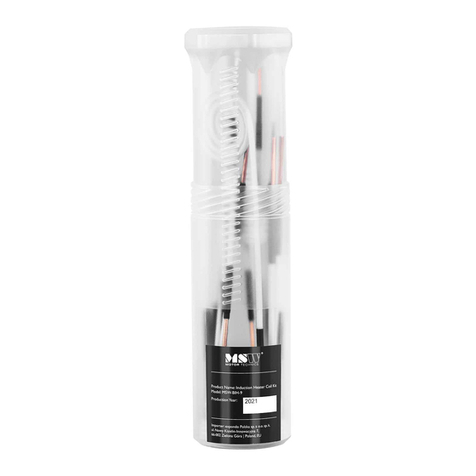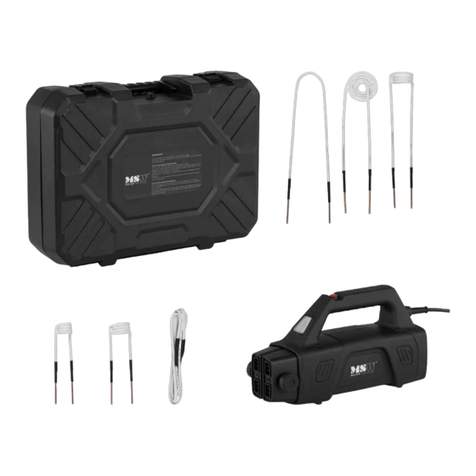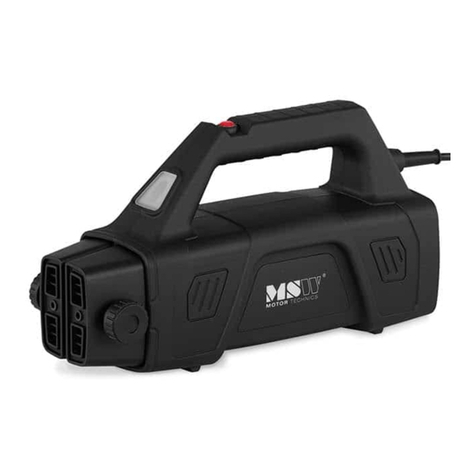
c) Use caution and common sense when operating this unit. A moment's
inattention during operation may result in serious personal injury.
d) To prevent accidental start-up, make sure the switch is in the off position
before connecting to a power source.
e) Do not wear loose clothing or jewelry. Keep hair, clothing, and gloves away
from moving parts. Loose clothing, jewelry, or long hair can be caught in
moving parts.
f) Before switching the unit on, remove any regulating tools or keys. Any tools or
keys left in the rotating part of the unit may cause injury.
g) The product is not a toy. Children should be watched to ensure that they do
not play with the product.
h) Do not place your hands or any objects inside the running device!
i) CAUTION: Some parts of the unit may become very hot - burn risk!
2.4. Safe use of the device
a) Do not overload the device. Use tools that are suitable for the application. A
correctly selected product will do a better and safer job for which it was
designed.
b) Do not use the device if the ON/OFF switch does not function properly (does
not turn on and off). Units that cannot be controlled by the switch are unsafe,
cannot operate, and must be repaired.
c) Disconnect the device from the power supply before adjusting, cleaning, or
servicing. This precaution reduces the risk of accidental start-up.
d) Keep unused product out of the reach of children and anyone unfamiliar with
the device or this manual. Products are dangerous when used by
inexperienced users.
e) Keep the product in good working order. Check before each use for general
damage or damage to moving parts (cracks in parts and components or any
other condition that may affect the safe operation of the device). If damaged,
have the device repaired before use.
f) Keep the product out of the reach of children.
g) Repairs and maintenance should be carried out by qualified personnel using
only original spare parts. This will ensure the safety of use.
h) To ensure the designed operational integrity of the device, do not remove
factory-installed covers or loosen screws.
i) When transporting or moving the device from storage to the place of use,
observe the health and safety rules for manual handling applicable in the
country where the device is used.
j) Avoid situations in which the device stops under heavy loads during operation.
This can cause overheating of the drive elements and consequent damage to
the equipment.































